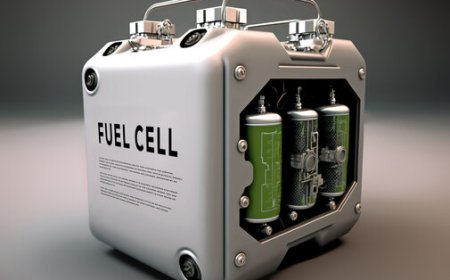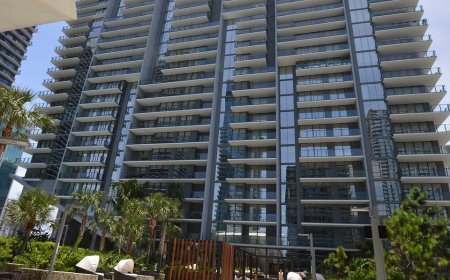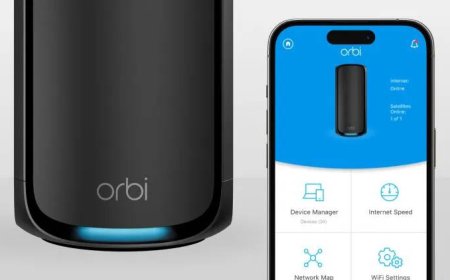Troubleshooting App Lag with Phone Diagnostic Software
Diagnose and fix app lag using Phone Clinix and phone diagnostic software to identify CPU, RAM, and storage issues quickly.

In the age of high-speed connectivity and powerful smartphones, app lag is more frustrating than ever. Whether you're trying to load a game, attend a video call, or simply scroll through social media, lagging apps can disrupt your experience and productivity. While most people blame a specific app or poor internet connection, the root cause often lies deeper in the phones hardware, software, or background processes. This is where phone diagnostic software comes into play. Tools like Phone Clinix help users and technicians identify and troubleshoot the real reasons behind app lag.
This article will explore the causes of app lag, how phone diagnostic software like Phone Clinix can help diagnose the problem, and offer steps to fix or mitigate lagging issues efficiently.
What Is App Lag?
App lag refers to a noticeable delay between a user's action and the corresponding response on a smartphone application. Examples of app lag include:
-
Slow loading times
-
Freezing or crashing
-
Delayed touch response
-
Unresponsive UI elements
Lag can occur on high-end smartphones just as much as budget devices, especially if there's a software or hardware issue lurking in the background.
Common Causes of App Lag
Before we dive into how phone diagnostic software helps, it's important to understand what might be causing the lag:
-
Low RAM or Memory Overload: Running too many apps simultaneously can exhaust your device's RAM.
-
Background Processes: Apps that continue running in the background drain resources.
-
Overheating: A phone that's too hot will throttle performance, causing lag.
-
Software Bugs: Outdated apps or OS glitches can result in poor performance.
-
Hardware Issues: Failing internal components like storage chips or processors may also cause apps to lag.
Identifying the exact problem manually is challenging thats why tools like Phone Clinix are indispensable for troubleshooting.
What Is Phone Diagnostic Software?
Phone diagnostic software is a tool designed to assess the performance and health of a mobile device. It can test components like:
-
RAM and storage
-
CPU performance
-
Battery health
-
Sensors and connectivity modules
-
Running background processes
Phone Clinix, a popular and trusted solution, provides both basic and advanced diagnostics. Whether youre a technician, reseller, or everyday user, Phone Clinix enables you to run extensive tests, generate reports, and pinpoint the source of performance problems like app lag.
Why Choose Phone Clinix?
Among the many options available for phone diagnostic software, Phone Clinix stands out for several reasons:
-
User-friendly Interface: Simple enough for beginners, powerful enough for professionals.
-
Real-time Monitoring: Shows live statistics on CPU, RAM, and background processes.
-
Cross-platform Support: Works with both Android and iOS devices.
-
Comprehensive Reporting: Gives detailed insight into whats causing lag and how to fix it.
-
Batch Testing: Perfect for businesses handling multiple phones.
How to Use Phone Clinix to Troubleshoot App Lag
Here is a step-by-step guide on how to use Phone Clinix and phone diagnostic software to troubleshoot app lag.
Step 1: Install and Launch Phone Clinix
Download Phone Clinix on the device you want to diagnose. If youre a repair technician or refurbisher, install the PC version to connect multiple devices.
Launch the app and allow necessary permissions for hardware and software diagnostics.
Step 2: Run a Full System Scan
Select the "Full Diagnostic" option to allow Phone Clinix to scan the entire system. This includes:
-
CPU usage
-
RAM status
-
App crash logs
-
Storage capacity
-
Background activity
This step helps identify whether system resources are being consumed unusually, which is often the main cause of lag.
Step 3: Check RAM and CPU Usage
From the dashboard, navigate to the performance metrics. Here, Phone Clinix will show:
-
Current and peak CPU usage
-
Active memory usage
-
Running applications and services
If CPU or RAM usage is constantly above 8090%, the device is likely struggling to manage your apps efficiently.
Step 4: Evaluate Storage Health
Insufficient or failing storage can severely impact app performance. Phone Clinix will check:
-
Total vs. used storage
-
Speed of internal storage (read/write speeds)
-
Fragmentation or corruption issues
If your storage is full or sluggish, even lightweight apps may lag.
Step 5: Analyze Battery and Thermal Data
Thermal throttling is another common cause of app lag. If your phone overheats, it will automatically slow down to prevent damage. Phone Clinix monitors:
-
Battery temperature
-
Charging health
-
Thermal status
This helps identify if overheating is the culprit.
Step 6: Inspect App Behavior
Phone Clinix offers insight into individual app behavior. It can reveal:
-
Which apps are using the most RAM
-
Frequency of app crashes
-
Apps running persistently in the background
You can uninstall or restrict background permissions for apps that are resource hogs.
Step 7: Generate and Review Report
Once the diagnostics are complete, Phone Clinix provides a detailed report summarizing all issues. This report can help technicians and users make informed decisions about:
-
Removing unnecessary apps
-
Updating or downgrading software
-
Performing a factory reset
-
Replacing hardware components if necessary
Other Tips to Reduce App Lag
Besides using phone diagnostic software, you can take these additional steps to improve app performance:
-
Clear Cache: Many apps store temporary files that can become bloated over time.
-
Update Apps and OS: New updates often contain bug fixes and performance improvements.
-
Disable Animations: On Android, developer options let you reduce or turn off UI animations.
-
Factory Reset: As a last resort, resetting your device can remove deeply embedded bugs and bloatware.
-
Avoid Task Killers: Contrary to popular belief, force-stopping apps constantly can worsen performance.
When Should You Seek Professional Help?
If you've gone through all the steps using Phone Clinix and your phone still lags, it may be time to consult a technician. Persistent issues despite clean reports may indicate failing hardware such as:
-
Flash storage
-
System-on-chip (SoC)
-
Damaged motherboards
Since Phone Clinix provides reliable diagnostic data, you can bring your reports to a technician for a faster resolution.
Final Thoughts
App lag is a widespread issue, but it doesn't have to be a mystery. With the help of phone diagnostic software, particularly Phone Clinix, you can uncover the root causes of lagging apps whether they stem from hardware limitations, overheating, memory overload, or background app activity.
Rather than guessing, use data-backed insights from Phone Clinix to take targeted action and restore your phones speed. Whether you're managing a tech repair shop or just want your personal phone to run smoothly, these diagnostic tools make troubleshooting smarter, faster, and more effective.



























